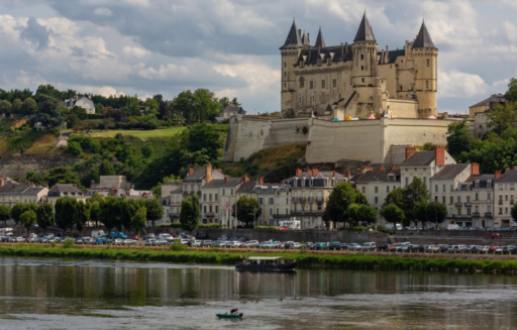Nestled in the picturesque village of Grand-Pressigny in France lies a hidden gem for history enthusiasts and archaeology buffs alike. The Prehistory Museum of Grand-Pressigny offers visitors a unique opportunity to journey back in time and uncover the mysteries of prehistoric civilizations. Through a fascinating collection of artifacts, tools, and archaeological finds, visitors can delve into the evolution of technology, rituals, and beliefs of ancient societies. The museum also provides valuable insights into the impact of climate change on prehistoric communities, offering a glimpse into the challenges faced by our ancestors as they strived to survive and thrive in a changing world.

Uncovering Prehistoric Artifacts at Grand-Pressigny
The Prehistory Museum of Grand-Pressigny is a treasure trove of ancient artifacts that provide a glimpse into the lives of prehistoric communities. From tools and weapons to pottery and jewelry, the museum's collection offers a fascinating look at the material culture of early humans. Visitors can marvel at the intricate carvings on bone and stone objects, and marvel at the skill and artistry of our ancestors. The museum's exhibits showcase a diverse range of artifacts, each with its own story to tell about the people who created and used them. Whether it's a finely crafted arrowhead or a delicate piece of jewelry, each artifact offers a window into the past and helps us to better understand the lives of prehistoric humans.
Exploring the Evolution of Tools and Technology in Prehistory
Through the various artifacts on display, visitors can trace the development of tools from simple stone implements to more sophisticated tools made from bone, antler, and even metal.
One of the highlights of the museum is its collection of flint tools, which were widely used by prehistoric humans for hunting, cooking, and other essential tasks. Visitors can see how these tools evolved over time, becoming more specialized and efficient. In addition to flint tools, the museum also showcases tools made from other materials, such as bone and antler, which were used for a variety of purposes.
The museum also explores the development of pottery, weaving, and other technologies that were crucial for prehistoric societies. Visitors can learn about the techniques used to create these items and how they contributed to the development of early civilizations.
By studying the tools and technology of prehistory, visitors can gain a deeper understanding of the ingenuity and resourcefulness of our ancient ancestors. The museum’s collection brings to life the challenges faced by prehistoric communities and the innovative solutions they devised to overcome them.
Interpreting Ancient Rituals and Beliefs Through Archaeological Finds
Ancient rituals and beliefs provide valuable insight into the spiritual and cultural practices of prehistoric communities. Through archaeological finds at the Prehistory Museum of Grand-Pressigny, we are able to unravel the mysteries of ceremonies, traditions, and belief systems that were an integral part of daily life for our ancestors. The artifacts excavated from this site offer a glimpse into the sacred practices and religious beliefs that shaped the spiritual landscape of the past. By studying these archaeological remains, we can piece together a more comprehensive understanding of the ancient rituals and beliefs that governed prehistoric societies.
The Impact of Climate Change on Prehistoric Communities
Climate change has been a major factor in shaping the lives of prehistoric communities throughout history. As temperatures shifted, sea levels rose and fell, and landscapes changed, early humans had to adapt in order to survive. The impact of climate change on prehistoric communities can be seen in various ways, from influencing migration patterns to affecting resource availability.
One of the key ways in which climate change affected prehistoric communities was through changes in temperature and precipitation patterns. In some regions, fluctuations in climate led to periods of drought or flooding, which in turn affected the availability of food and water. This forced early humans to either adapt by finding new sources of food and water or to move to more hospitable regions.
Additionally, as temperatures changed, so did the habitats of plants and animals that early humans relied on for food and shelter. This meant that prehistoric communities had to constantly adjust their hunting and gathering practices in order to keep up with the shifting environment. As certain resources became scarce, competition for them may have increased, potentially leading to conflicts between different groups.
Furthermore, as sea levels rose and fell due to climate change, coastal communities were particularly impacted. Rising sea levels could have led to the loss of important resources and habitats, while falling sea levels could have exposed new land that early humans could exploit for food and shelter.
Overall, the impact of climate change on prehistoric communities was profound. It forced early humans to constantly adapt to changing environmental conditions, shaping their cultural practices, migration patterns, and social organization. By studying how prehistoric communities responded to climate change, we can gain valuable insights into how humans have historically coped with environmental challenges and how these experiences can inform our understanding of climate change today.
